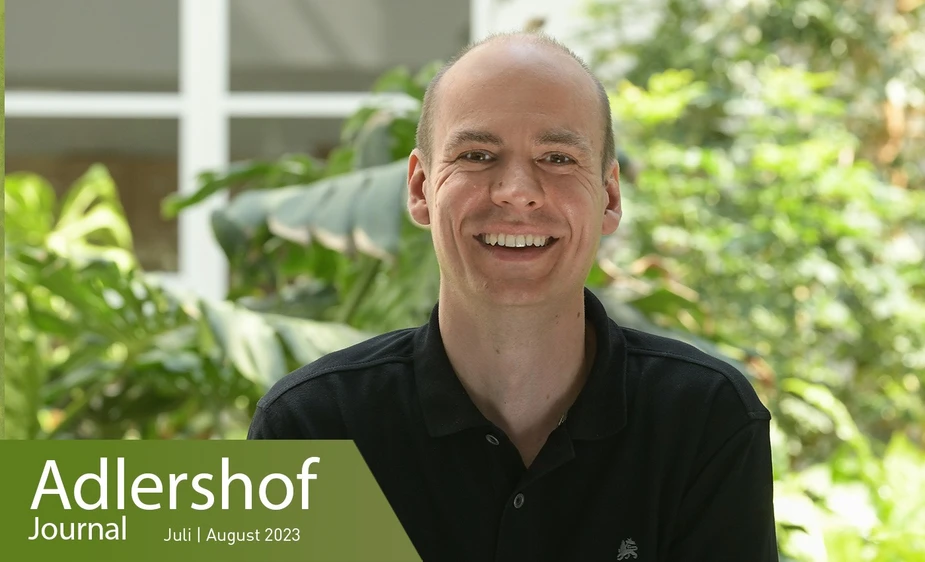The fly counter
Sami Domisch researches semi-aquatic insects
Considering the mayfly’s lifespan, it is not surprising that it is sometimes referred to as the dayfly. If it is lucky, it might get more than one, maybe three or four days of flying through the sun and wind before it all ends. There is something the name does not tell us. Before the dayfly takes to the air, it may already have lived for several years. As a larva, in the water.
It belongs to the category of “semi-aquatic” insects, which spend at least one part of their life in water. A feature that the mayfly shares with stoneflies, caddisflies, and dragonflies. And one that has garnered the long-term interest of Sami Domisch, a biologist who has been based in Adlershof since 2016. Specifically, Domisch has been based at the Leibniz Institute of Freshwater Ecology and Inland Fisheries (IGB), where he established the EPTO database in cooperation with scientists across the globe, documenting the populations of semi-aquatic insects as comprehensively as possible.
The EPTO acronym refers to the four species that the project focuses on: Ephemeroptera are mayflies, Plecoptera are stoneflies, Trichoptera are caddisflies, and the Latin for dragonflies is Odonata. What can we learn if we can pool all the findings we have collected about these four creatures through water samples collected since 1951? This was the initial research question 10 years ago when Domisch started this research at Yale University in the US state of Connecticut.
As he sees it, flies and dragonflies have an undeniable charm. Not only are insects the most biodiverse group in the entire animal kingdom. They also play a pivotal role in assessing the quality of a body of water and its development. The larvae of the stonefly, for example, react sensitively to a decrease in the quality of its home environment. To identify and possibly correct environmental impacts at an early stage and measure the impact of climate change, insights into the populations of these species are a useful tool. The database has since been activated and has now been available at glowabio.org since May 2023.
Born in Helsinki 41 years ago, Domisch’s path to Adlershof was long and winding. At age 19, he enrolled in biology in Kaiserslautern and went on to study oceanography in Oldenburg. He wrote his final thesis on the island of Helgoland. The question was how a species of algae introduced from Japan affected the growth of native plants on the seafloor. In 2009, this was followed by his dissertation at the Senckenberg Research Institute in Frankfurt about the population of semi-aquatic insects in the body of waters of the low mountain ranges in Germany and other European regions. With a PhD in hand, he completed the above-mentioned, three-year stint at Yale and then brought the EPTO project to Adlershof.
How does he find working here? “Very productive,” says Domisch, “but relaxed at the same time.” He recalls being under “high pressure” at Yale but did not find that the pressure yielded better work results. He prefers the approach in Germany: “IGB lured me here.” He comes to Adlershof by S-Bahn from Prenzlauer Berg, where he lives with his wife and two children. Whenever time allows, he embraces his love for music on piano and the guitar.
Dr. Winfried Dolderer, Adlershof Journal
